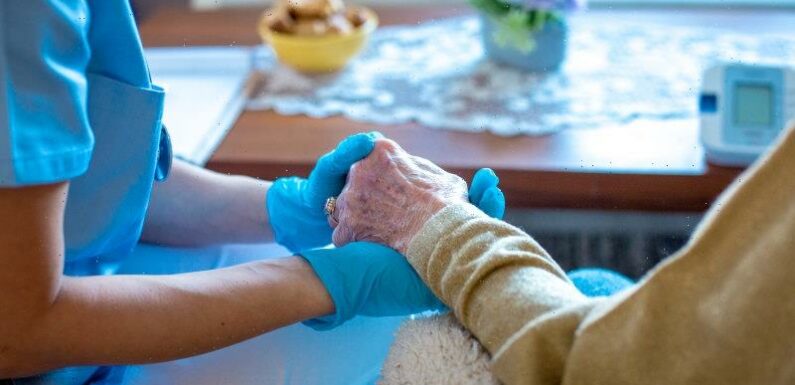
A pre-election promise to boost aged care spending by $2.5 billion is just the tip of a growing fiscal iceberg confronting the federal government as it grapples with increasing pressures on the nation’s finances while improving the quality of services for Australia’s elderly.
Aged care reform was one of Labor’s key election pledges. It said it would outlay the extra $2.5 billion to fix the sector over the next four financial years, its second most expensive promise after childcare.
Labor’s election promise on aged care will cost $2.5 billion over the forward estimates. That doesn’t include wage rises.Credit:iStock
That commitment includes funding to help improve nutrition and food and increase the on-site hours of registered nurses, and is in addition to the current running costs of aged care services for the government.
But the extra funding could be dwarfed by an imminent decision of the Fair Work Commission over a wage rise for the sector, which could come with a $2.2 billion price tag.
The total impact of the wage decision is so unclear, the government will put money away in the budget’s contingency reserve to help cover the ultimate cost.
Aged care is also one of the government’s largest and fastest-growing spending areas along with defence, health, disability services and interest on government debt. Spending in the sector is predicted to rise by 5 per cent a year.
In March, the previous government forecast aged care services would cost $27.7 billion this financial year and more than $30 billion in 2023-24, but Aged Care Minister Anika Wells says those forecasts are already out of date.
Commonwealth spending for aged care was expected to cost $29.8 billion this financial year, and reach $52.5 billion in a decade, she told an aged care conference last week.
“This doesn’t include the government’s election commitment to improve aged care quality or the future spending requirements as a result of the current wages case,” she said.
“More room will need to be found in the budget to fund both the existing projected spending and the additional critical investments.”
The government introduced legislation to parliament in July to make a start on these changes but is waiting on the Fair Work Commission’s decision on wages, which is expected later this year.
The Health Services Union started the wage case nearly two years ago, seeking a 25 per cent pay rise to $29 an hour. At the time, it estimated such an increase would cost an extra $2.2 billion over four years.
The union’s national president, Gerard Hayes, said the planned stage three income tax cuts should be scrapped or wound back to pay for wage rises and improvements to aged care.
“There’s no moral justification to give high-income earners a tax cut when older Australians have had to endure jelly and frankfurts because of the funding crisis in aged care,” he said.
Tom Symondson, chief executive of peak body Aged and Community Care Providers Association, said while the government had already increased funding, it was not enough to make up for nearly a decade of inadequate support that had put the sector under “enormous pressure”.
“We’re already talking to the government and other partners about what we can do to resolve the ongoing funding and workforce issues faced by our sector,” he said.
He said the sector was “delighted” the government had guaranteed it would meet the full cost of any pay increase.
Impact Economics and Policy lead economist Angela Jackson said the cost of aged care would only continue to rise as the population aged and more people needed services.
“The squeeze here comes because not only are costs rising, which we see in aged care, but on the flip side, the working-age population is reducing. And that’s really where the fiscal crunch comes in,” she said.
Jackson said a benefit of investing in aged care services beyond improved care for residents, was that it would free up family members currently acting as carers, allowing them to work.
“There is an economic dividend from adequately providing the services, as well as the flow-on impacts in terms of lower health care costs if people are receiving the basic care that they need,” she said.
Cut through the noise of federal politics with news, views and expert analysis from Jacqueline Maley. Subscribers can sign up to our weekly Inside Politics newsletter here.
Most Viewed in Politics
From our partners
Source: Read Full Article
